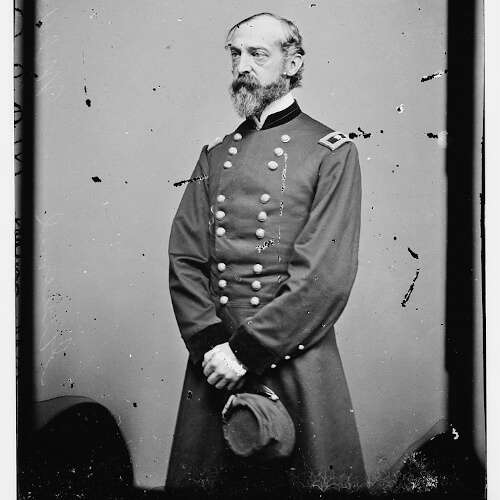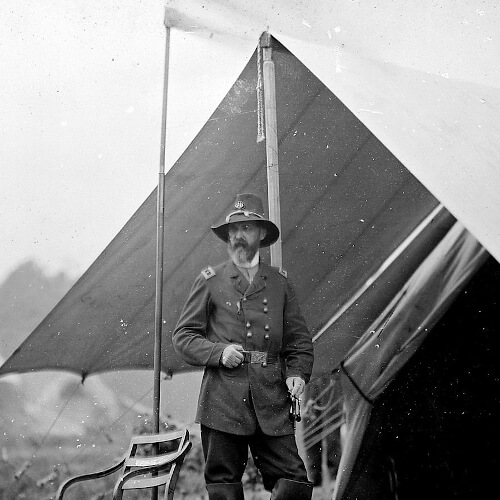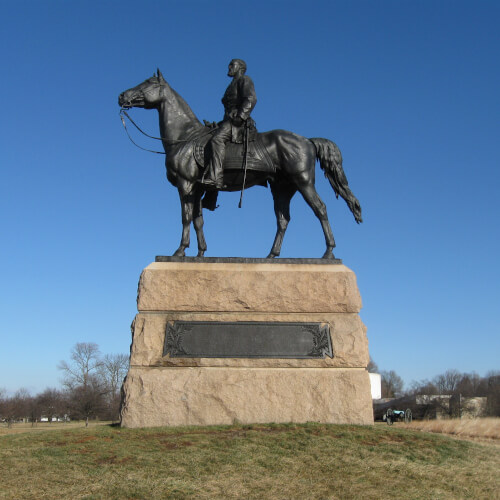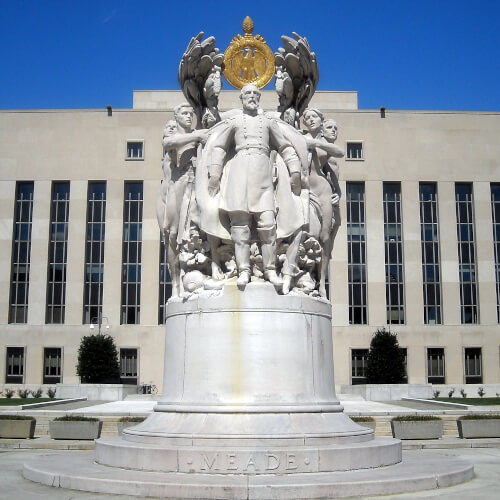Famous People of the Civil War
Learning about the lives of some famous Civil War era individualsGeorge Gordon Meade
George Gordon Meade was a West Point graduate and engineer who became an army officer and played a critical role in the American Civil War. He is most famous for defeating Robert E. Lee and the Confederate Army at Gettysburg, Pa. After the war as the commander of the 3rd Military District in the south, Meade was noted for his leadership, which helped during Reconstruction.
Early Life
George Gordon Meade was born in Cadiz, Spain on New Year’s Eve 1815 to Richard Meade and Margaret Butler Meade. Meade’s father was formally a merchant from Philadelphia but was living in Spain as an agent for the US Navy. After Meade’s father died in 1828, the family returned to the United States and George was sent to school at Mount Hope College in Baltimore, MD. In 1831, George secured an appointment to the United States Military Academy at West Point. Graduating 19th in a class of 56, Meade was commissioned as a second lieutenant in 1835 and assigned to the 3rd US Artillery.
Military and Civilian
After graduation, Meade was sent to Florida to fight the Seminole Indians but quickly became ill and was transferred to Massachusetts. After recovering, he resigned from the Army in 1836 and began working as an engineer. In 1842, due to declining work, he decided to re-enlist in the US Army and was made a lieutenant of topographical engineers. In 1845, Meade served as a staff officer after the outbreak of the Mexican-American War and was brevetted to first lieutenant for gallantry at the Battle of Monterrey. He was promoted to captain in 1856, he was ordered to oversee a survey of the Great Lakes where he remained until the outbreak of the Civil War in April 1861. At the outbreak of the war, Pennsylvania Governor Andrew Curtin recommended that Meade be promoted to brigadier general of volunteers and was given command of the 2nd Brigade, Pennsylvania Reserves.
The Civil War
Initially assigned to Washington, DC, his men built fortifications around the city until being assigned to Major General George McClellan’s newly formed Army of the Potomac. In the spring of 1862, Meade took part in the Peninsula Campaign until being wounded three times at the Battle of Glendale. In 1862, he earned praise for his efforts at the Battle of South Mountain and again days later at Antietam. When Major General Joseph Hooker was wounded, Meade was selected by McClellan to take over.
Following his defeat at Chancellorsville General Hooker was relieved and command was offered to Meade who accepted. Three days after taking command, Union forces encountered Confederates at Gettysburg, Pennsylvania. Even though he was new to command and he suffered the loss of one of his best commanders in Major General John Reynolds, Meade’s troops were able to withstand attacks on the first two days of battle and to repulse Lee’s great charge on the third day. After the battle as Lee retreated back to Virginia, Meade chose not to pursue him. President Lincoln criticized Meade for not attacking the defeated Rebels. Meade offered his resignation, but Lincoln denied it and instead promoted Meade to brigadier general on July 7, 1863. Meade continued to command his army during the Bristoe Station and Mine Run campaigns, but both proved to be indecisive.
Later Life
After the Civil War, Meade remained in the service and took on various command positions. In 1868, he took over the Third Military District in Atlanta and oversaw Reconstruction efforts in Georgia, Florida, and Alabama. In 1872, while in Philadelphia, the wound he received at the Battle of Glendale began to bother him and his health began to decline and he contracted pneumonia. Meade died on November 7, 1872, and was buried at Laurel Hill Cemetery in Philadelphia.
Fast Facts
Fast Fact #1
In 1840, he married Margaretta Sergeant and the couple would have seven children.
Fast Fact #2
Known to his men as “The Old Snapping Turtle,” Meade had reputation for a short temper and possessed little patience for the press or civilians.
Fast Fact #3
In the 1850s Meade spent time designing lighthouses and conducting coastal surveys along the East Coast. Among those lighthouses he designed were those at Cape May (NJ), Absecon (NJ), Long Beach Island (NJ), Barnegat (NJ), and Jupiter Inlet (FL). During this time, Meade also devised a hydraulic lamp that was accepted for use by the Lighthouse Board.
Fast Fact #4
Meade was noted for holding councils of war with his commanding officers. Rather than making all of the decisions himself and then giving the orders to his subordinates, Meade held these councils to get input from his commands. His most famous one took place on July 2, 1863 during the Battle fo Gettysburg.
Learn More
Videos
Vocabulary
Council of War – A council of war is a term in military science that describes a meeting held to decide on a course of action, usually in the midst of a battle
Engineer: a person who designs, builds, or maintains engines, machines, or public works.
The Third Military District of the U.S. Army – a temporary part of the U.S. War Department that was created by the Reconstruction Act and existed in the American South after the Civil War. It comprised Georgia, Florida and Alabama and was headquartered in Atlanta.




